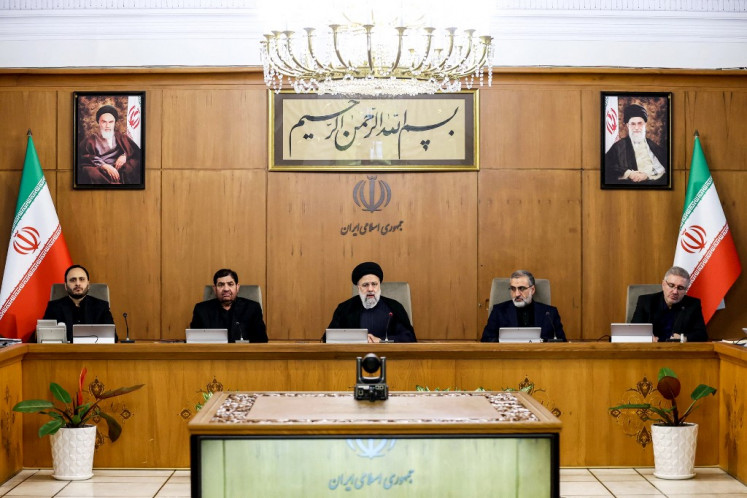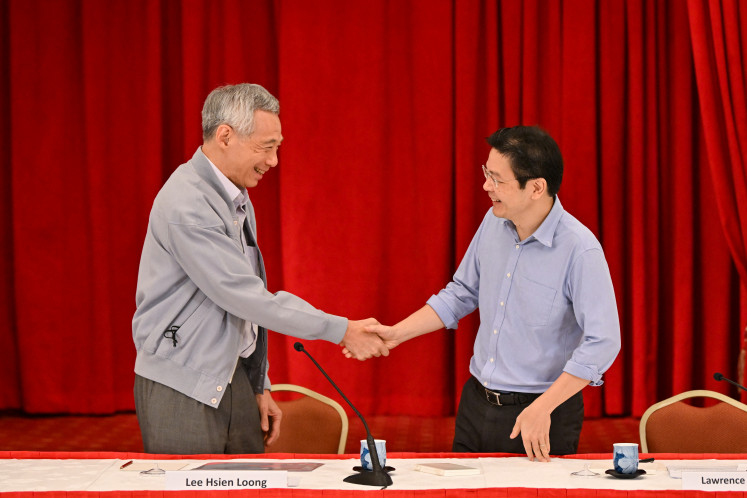Govt eyes untouched sectors for new micro-loan subsidies
The government is eyeing productive sectors such as agriculture, poultry and fisheries in a new move that will halve micro-loan (KUR) lending rates to stoke micro and small businesses and spur economic activities
Change Size

T
he government is eyeing productive sectors such as agriculture, poultry and fisheries in a new move that will halve micro-loan (KUR) lending rates to stoke micro and small businesses and spur economic activities.
Finance Minister Bambang Brodjonegoro said the government would subsidize state banks more so they could cut their lending rate from 21 to 12 percent, starting in July. The plan is expected to help micro and small business people as the government aims to spur the country's economic growth, which fell to 4.7 percent in the first quarter, the lowest level since 2009.
'Most of the KUR disbursement goes to the trade sector. Little has been disbursed to the production sector. We want the subsidies this time to go into productive sectors, such as agriculture, fisheries, small industry,' Bambang told The Jakarta Post in a recent interview.
'The trade sector has been relatively well established and there have been many suppliers for that sector. [Bank] BTPN and [Bank] Danamon disburse [micro loans] for the trade sector. We need to fill in the gap: namely agriculture, fisheries, poultry and small industry,' he explained.
The government will fund the KUR subsidies from the state budget, expecting to spend a total of Rp 1 trillion on interest rate subsidies this year, as opposed to the Rp 400 billion previously planned in the Revised 2015 State Budget.
Publicly listed state lender Bank Rakyat Indonesia (BRI), the most profitable bank in the country that focuses on lending to micro and small businesses, welcomed the government's plan, as long as it could cover overhead costs and did not result in a negative margin.
'Micro loans also require high overhead costs. That has to come into consideration in allocating the amount of subsidy funds because we can't give loans if the funds run out before the end of the year,' BRI president director Asmawi Syam said Wednesday, making assurances that the government would not leave state banks suffering losses with the program.
Micro loans accounted for almost a third of BRI's total loans last year, growing by 16 percent during the period as the lender captured more micro customers, from 6.5 million in 2013 to 7.3 million. That has contributed to a 13.88 percent rise in overall outstanding loans last year to Rp 490.91 trillion and boosted net profits by 14.35 percent to Rp 24.2 trillion.
Vice President Jusuf Kalla has on several occasions criticized the nation's stubbornly high lending rates that discourage businesses from expanding. Indonesia's bank lending rate is among the highest in the region, as indicated by the high net interest margin (NIM) of 5.3 percent for average commercial banks as of May this year, Financial Services Authority (OJK) data shows.
In the future, the government aims to further bring down the micro lending rate to 9 percent, as it may secure cheap funding from Japan in the amount of Rp 50 trillion to subsidize the KUR interest rates, according to Gatot Trihargo, deputy minister for business services at the State-Owned Enterprises (SOE) Ministry.
KUR loans were launched in 2007 by the previous administration of Susilo Bambang Yudhoyono as one of his pro-poor programs to provide working capital for micro, small and medium businesses, especially those that could not yet access bank loans. They carried interest rates of 22 to 24 percent, lower than market interest rates that reach up to 30 percent.
In 2015, the administration of President Joko 'Jokowi' Widodo decided to trim participating lenders in the program following reports of rising numbers of non-performing loans (NPLs) from the banks involved, which reached as high as 30.9 percent in one regional lender. Besides reducing the number of participating banks, the government has also set the maximum limit of non-collateral loans at Rp 15 million (US$1,128). (foy)
' Tassia Sipahutar contributed to this story









